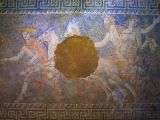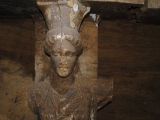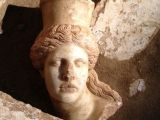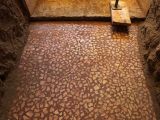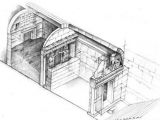By the looks of it, archaeologists are getting closer and closer to solving the mystery surrounding an ancient tomb unearthed at a distance of some 370 miles (nearly 600 kilometers) north of the city of Athens in Greece a couple of years back.
Thus, a statement issued by Greece's Ministry of Culture this past Monday announces the discovery of hundreds of bones belonging to as many as five different corpses inside this 4th century BC monument.
Mind you, the news about the discovery of human skeletal remains inside the tomb first made headlines in last year's November. Still, it took researchers a while to figure out that they were dealing with five dead and not just one.
Exactly how many bones are we about talking here?
Information shared with the public by Greece's Ministry of Culture says that archaeologists exploring the ancient monument have so far recovered well over 500 bones from inside it. True, some of these skeletal remains come from animals, most likely horses.
Still, this does not change the fact that a whole lot of human bones were found lying around in the tomb. In fact, scientists have until now managed to match as many as 157 bones to specific corpses.
It is understood that, of the five people laid to rest in the 4th century tomb, one was a woman who died around the age of 60. Another two were men estimated to have passed away when about 30 to 45 years old, and a fourth one was a newborn.
The reason scientists have not yet determined whether the fifth corpse belonged to man or a woman is that this body was cremated before being buried. Hence, all specialists can say that this fifth body was that of an adult individual.
The Greek Reporter tells us that, in the weeks to come, scientists will get to work trying to extract DNA samples from these human bones. It is expected that these samples will help reveal the corpses' identity.
This one tomb is an archaeologist's wonderland
Apart from these over 500 bones, archaeologists exploring this 4th century BC tomb in Greece have so far come across gorgeous ancient mosaics, sphinxes, female statues and even coins showing the face of Alexander the Great.
Of the mosaics discovered inside this monument, one shows Persephone, the Greek queen of the underworld, being abducted by Hades, the god king of the underworld. Hermes, conductor of souls and messenger of the gods, is also depicted in this mosaic.
The sphinxes and the female statues were all found placed at the entrance of the tomb's different chambers. Hence, it is believed that they served to protect the monument against anyone who would dare disturb the ones resting inside it.
For quite a while after this 4th century tomb was discovered, many believed it to be the final resting place of Alexander the Great. If not of the ancient ruler himself, then perhaps of his mother or of one of his generals. However, judging by the most recent evidence, chances are that this is not the case.
To get a better idea of what the monument looks like and what artifacts have until now been found hidden inside it, check out the photo gallery below.
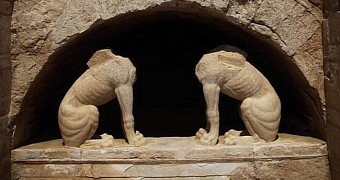
 14 DAY TRIAL //
14 DAY TRIAL // 
